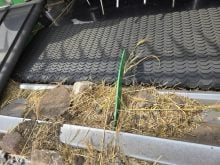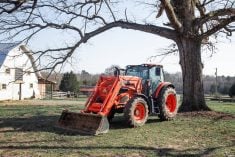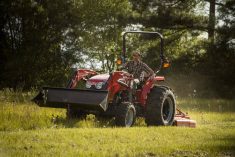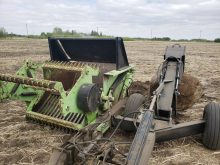ST JEAN BAPTISTE, Man. – 2010 looks like a bad year to grow wheat, analysts say.
While the crop’s low projected returns are mostly due in the short term to huge supplies produced in 2009, they are exacerbated by the long term slide in wheat returns for prairie farmers.
“More and more growers are perceiving wheat to be a filler crop, until they can work through their rotation and get back to a crop they think has a better chance at making money,” said Pro Farmer Canada analyst Mike Jubinville during St. Jean Farm Days.
Read Also

Russian wheat exports start to pick up the pace
Russia has had a slow start for its 2025-26 wheat export program, but the pace is starting to pick up and that is a bearish factor for prices.
“When I talk to growers across Western Canada, they’re obviously disappointed on the relative wheat returns.”
Earlier, Manitoba Agriculture business development specialist Dan Caron had laid out an early crop returns ranking that showed wheat and barley at the bottom of the list in Manitoba.
“Oats, canola probably look best in my book,” said Caron.
“Wheat and barley are fairly tough to pencil out.”
At expected 2010 prices, Manitoba farmers need to produce 86.2 bushels of oats per acre to start collecting profits beyond operating and fixed costs, but would need to harvest 50.4 bu. of spring wheat or 88.5 bu. of barley to get into the black.
Canola producers would need to get 32.6 bu. to start making profits.
Canola and oats yields in Manitoba tend to be higher than those break even minimums, but spring wheat and barley tend to yield less than their minimums.
This is early for crop-to-crop comparisons and the projection relies on expectations for prices and yield that are nine months to a year away, but farmers pay great attention in the pre-seeding period to relative return calculations when choosing what to do with free acres.
Caron said farmers should make better overall returns in 2010 than in 2009 because fertilizer prices have dropped. That’s the biggest factor in his higher returns-over-operating-costs comparisons.
In his calculations, farmers would make $132.28 per acre for oats this coming crop, compared to $88.28 in 2009. Canola would make $110.08 per acre compared to $74.70 in 2009, wheat $61.48 up from $37.60 and barley $56.70, up from last year’s $46.
Caron noted these operating cost numbers don’t include fixed costs like land payments and machinery depreciation, but farmers often are most concerned with covering their operating costs.















